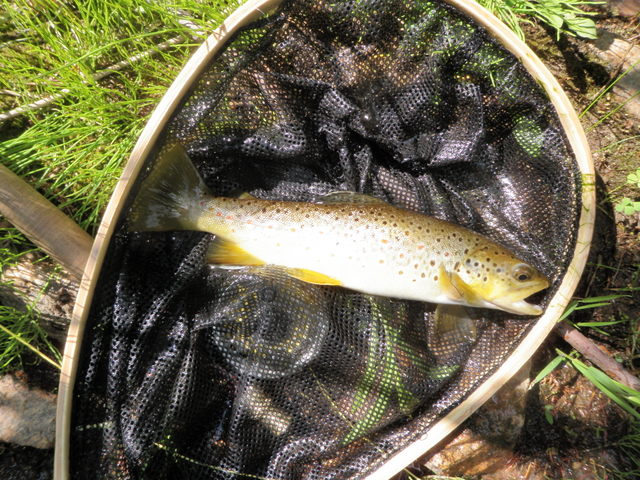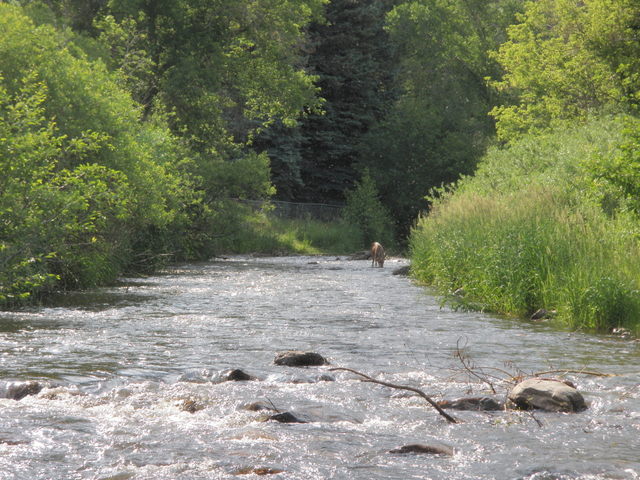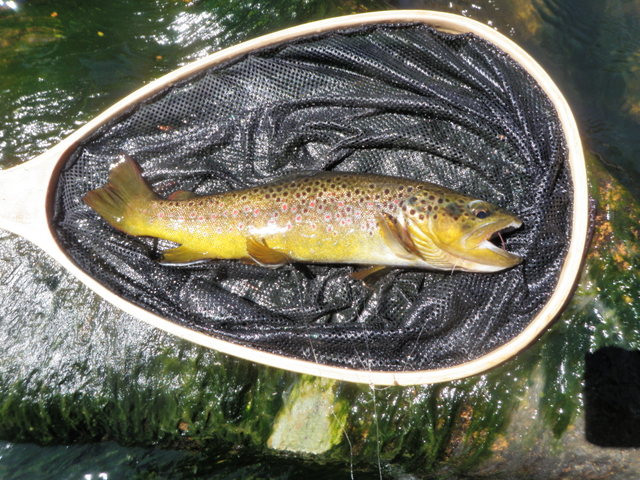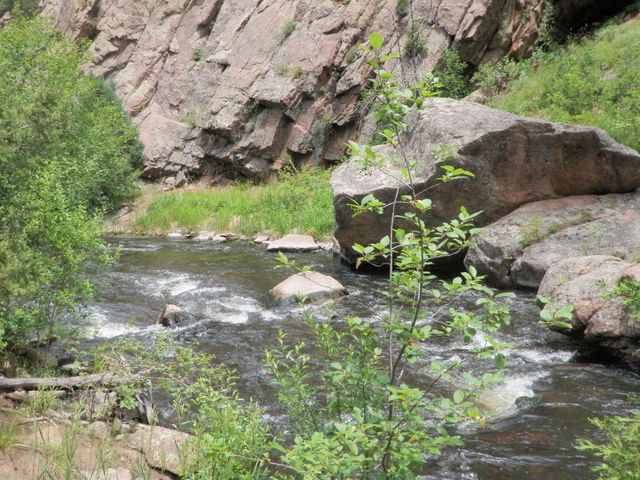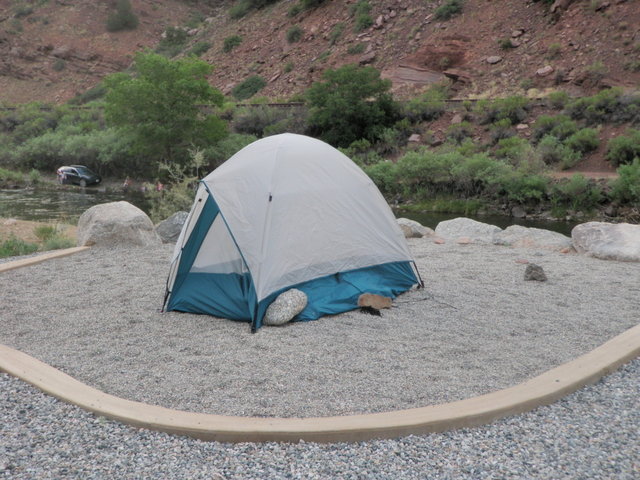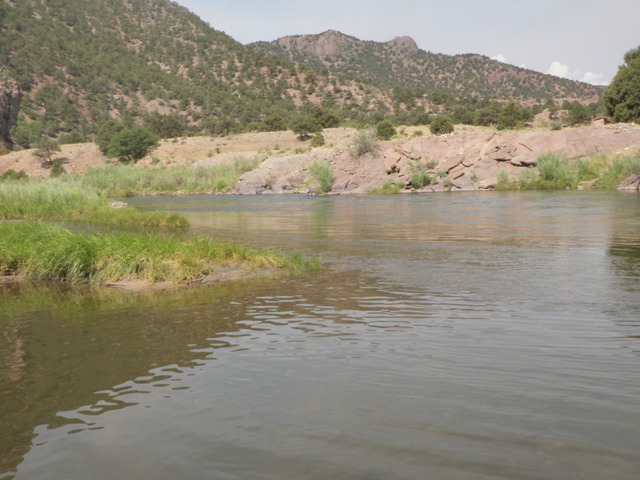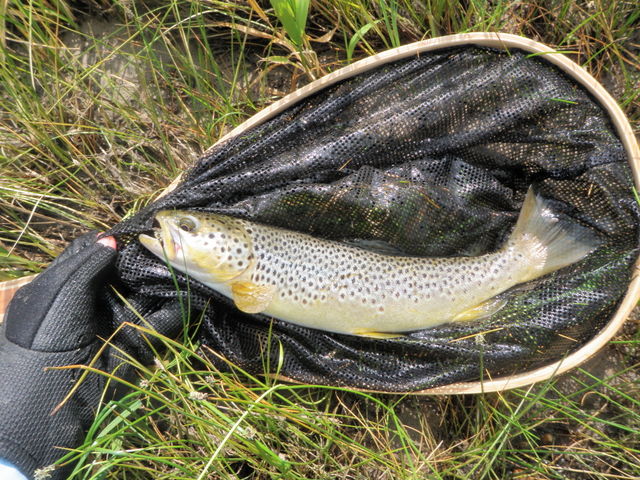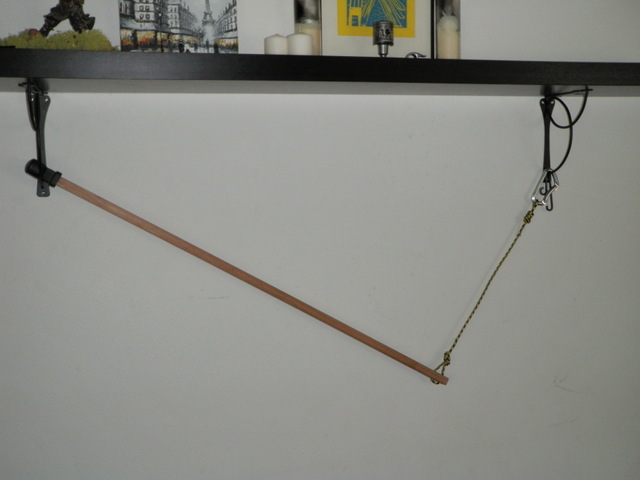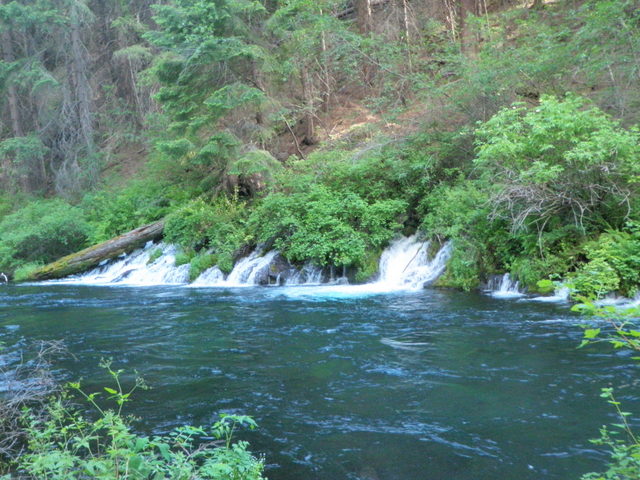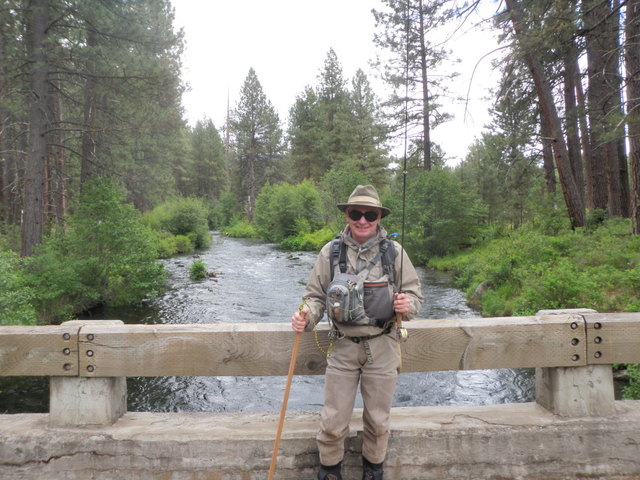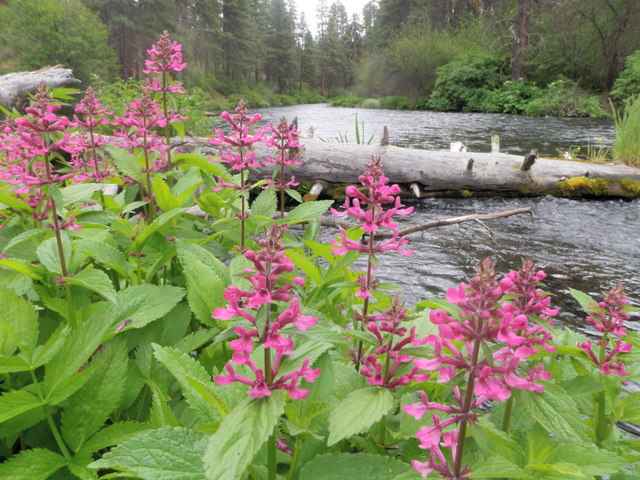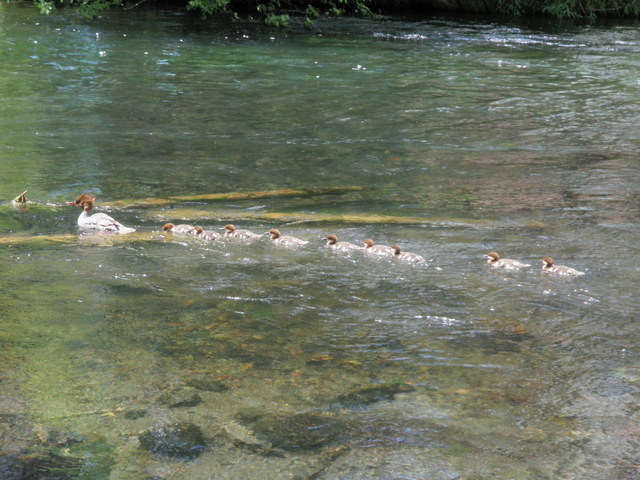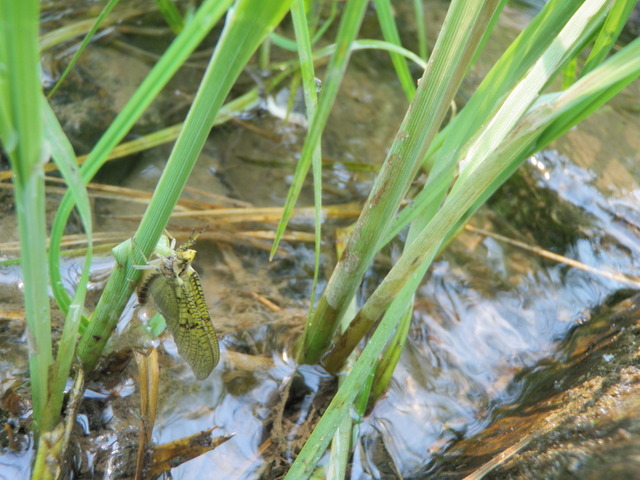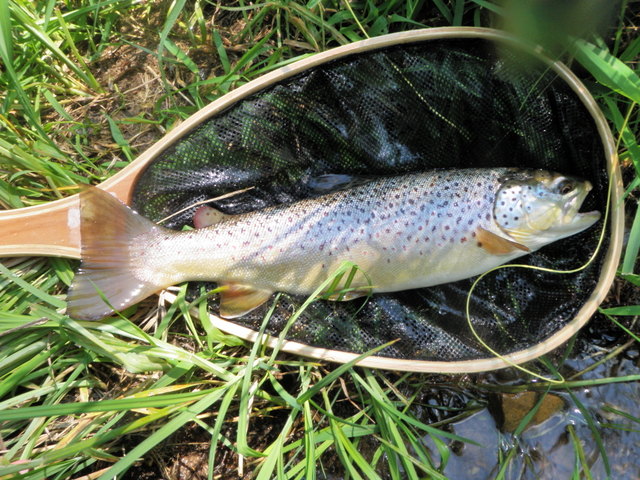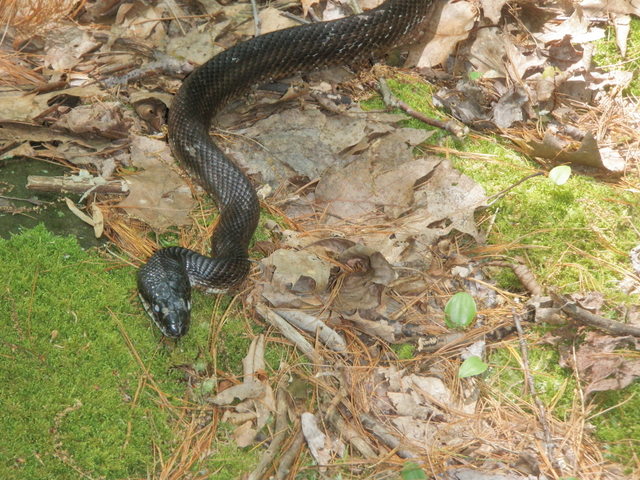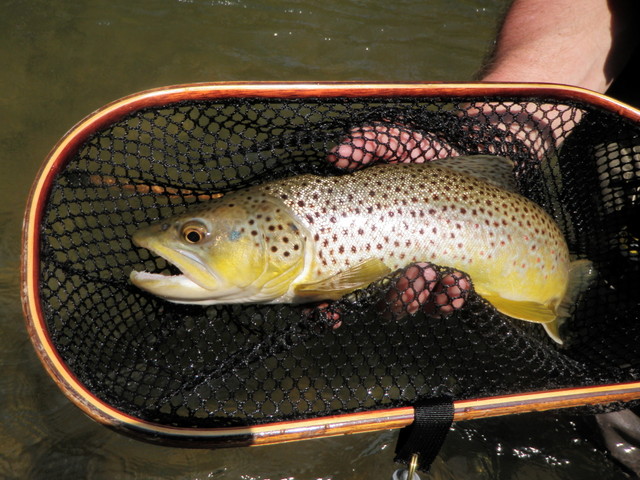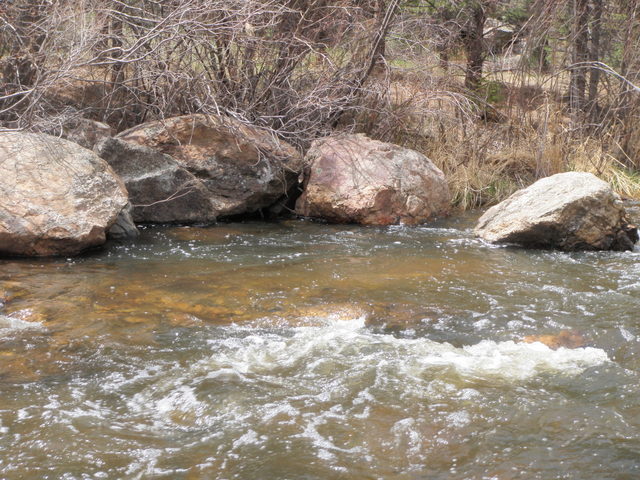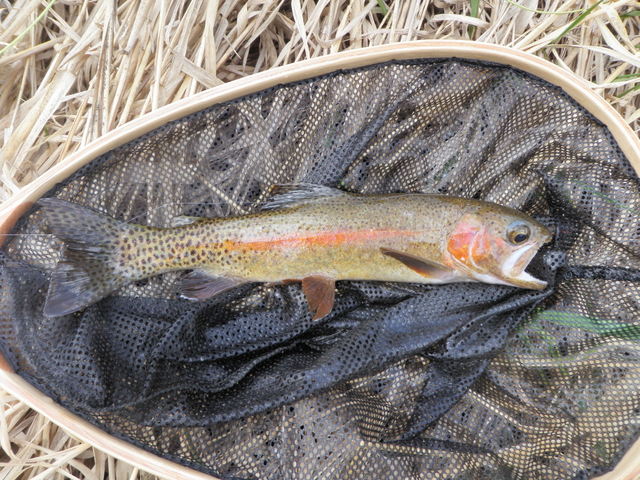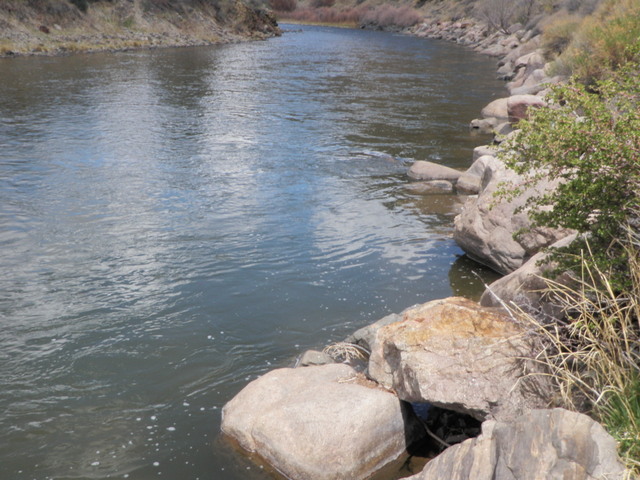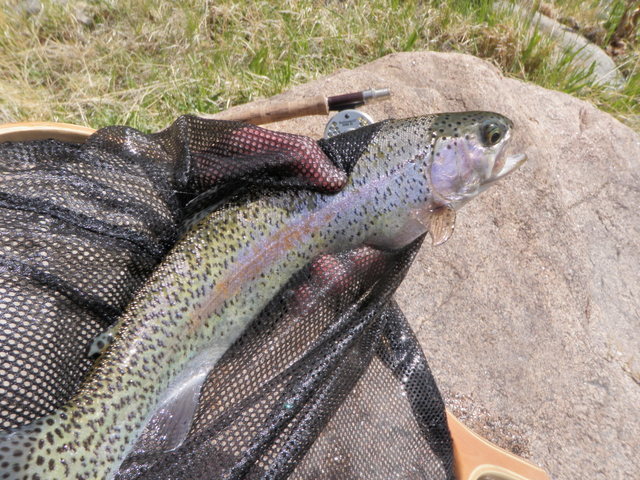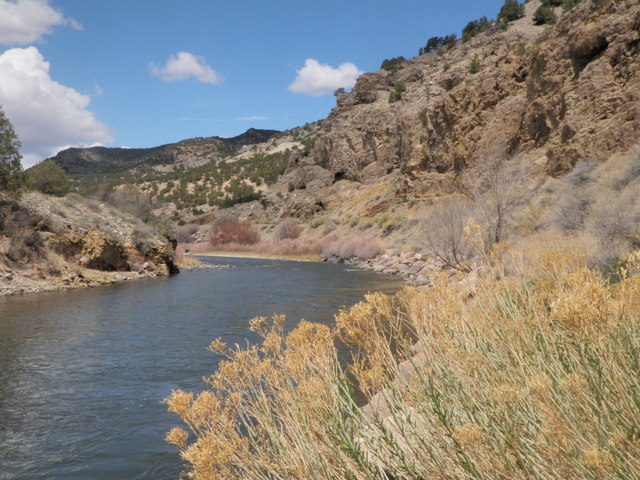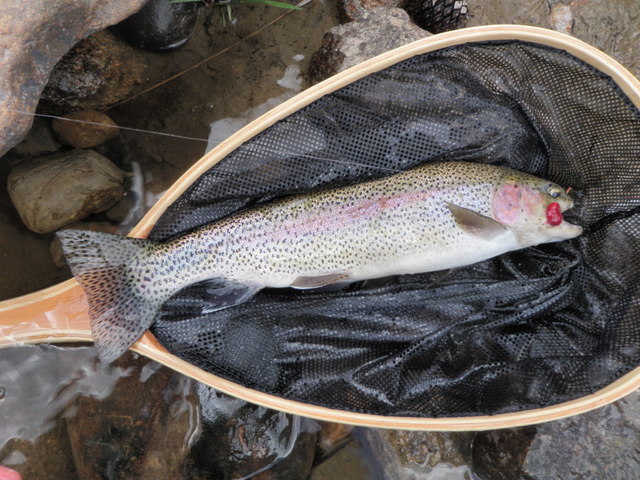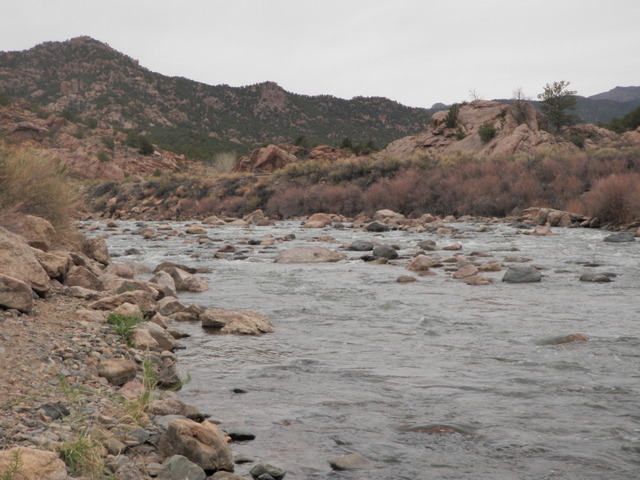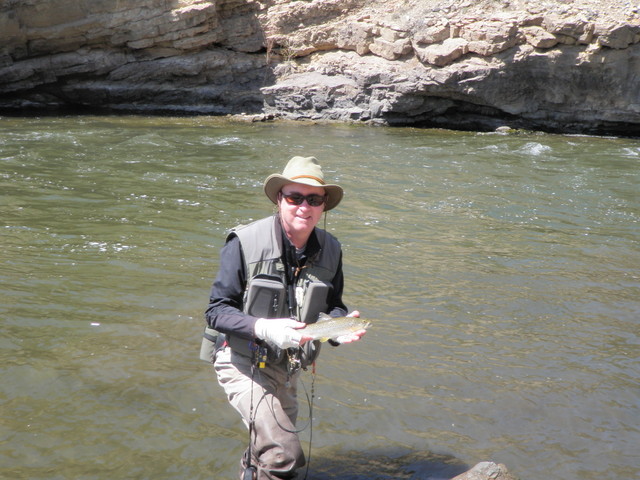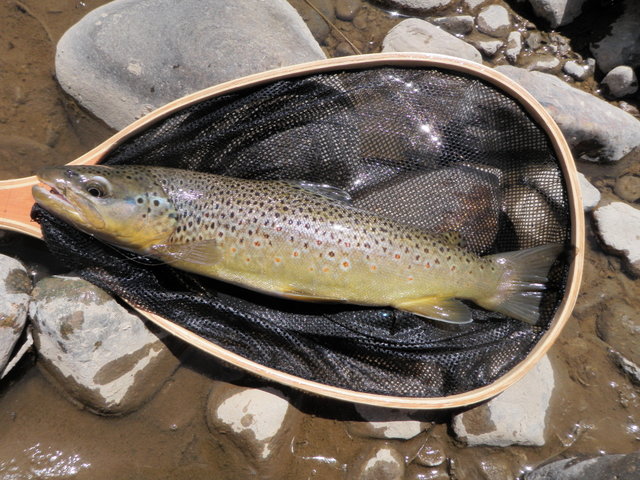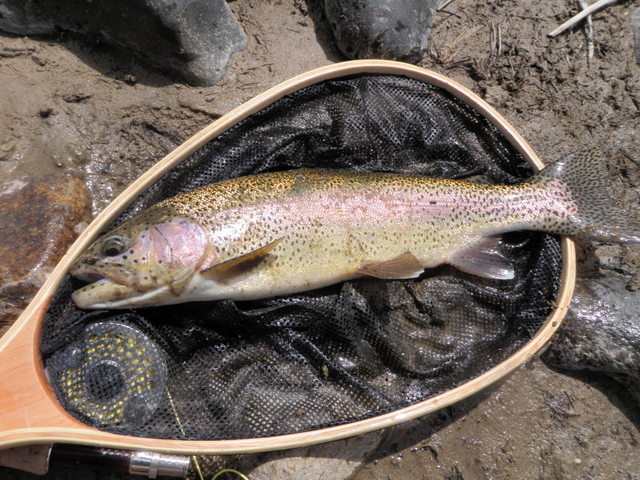Time: 8:00AM – 10:00PM
Location: Little Mountain, Buick Boulevard, Aimeti Lane, No Kill Area
Fish Landed: 14
Penns Creek 05/30/2013 Photo Album
I’ve read numerous articles about the fabled green drake hatch on Penns Creek as well as heard stories from my friend Jeff Shafer. Frankly I was a bit intimidated by the whole experience; huge mayflies everywhere and difficult to imitate with crowds of other fishermen bordered on a circus rather than a fly fishing experience. Eastern green drakes have bodies over an inch in length and huge light green wings and are imitated by size eight flies. They begin to emerge near the junction with the Susquehanna River and move upstream over a weeks’ period of time and attract a posse of fly fishermen that attempt to migrate upstream along with the hatch. This annual one week event typically coincides with Memorial Day weekend, but can occur earlier or later depending on the spring weather in central Pennsylvania.
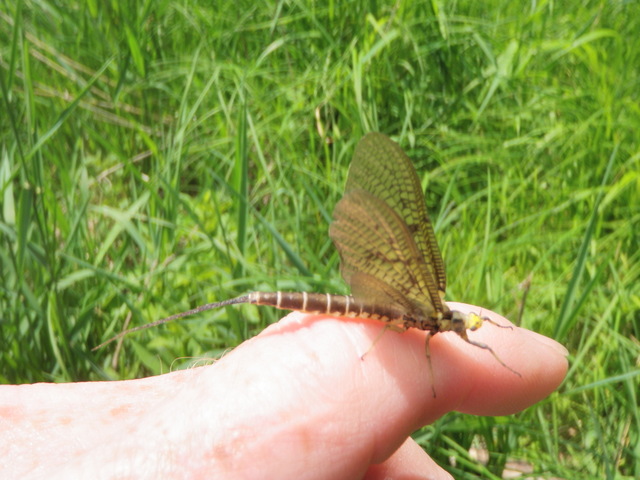
Green Drake on Dave’s Finger
I received my reunion package in the mail from Bucknell University in February and decided in April to make the trip in May. I emailed my Bucknell friends and checked to see who would be joining me for number 40. Bucknell is located in Lewisburg, Pa. approximately 45 minutes east of Penns Creek, and can serve as a convenient jumping off point for fishing ventures. I discovered that several of my friends, Jeff Yingling and Bill Hicks, would be joining me for reunion weekend, so I made my online reservations for the weekend activities and reserved a dorm room for Thursday, Friday and Saturday nights. At the same time I emailed my fishing friend Jeff Shafer who lives in Whitehall, Pa. and let him know that I would be in central Pa. at the end of May and the beginning of June. Jeff quickly replied that he would block out the days that I would be there and join me for some fishing.
In addition to attending the reunion and fishing, I also planned to visit my good friend Don Batchelor in State College, Pa. and also spend time with my brother Jim in Lititz, Pa. and my sister Marcia near Topton, Pa. This trip unlike the 2012 trip was primarily focused on visiting friends and family with the secondary benefit of a few days of fishing. In the end my itinerary worked out like this. Fly to Philadelphia on May 28, the day after Memorial Day and drive to Lititz to spend the night at my brother’s house. On Wednesday morning I would drive to State College and spend the day with my friend Don Batchelor and while there purchase a submarine sandwich and food for lunch and dinner the next day. Thursday morning I would travel on route 45 from State College to Penns Creek and meet Jeff Shafer who was traveling from Whitehall, Pa.
We planned to fish from morning until after dark and then drive to Lewisburg where we would stay in the dorm room I reserved. Friday featured a return to Penns Creek for a day of fishing; however, I would depart the stream by 4-5PM to join some fraternity brothers at a cookout at a friend’s house just south of Lewisburg. Saturday’s schedule was filled with reunion activiities and then after brunch on Sunday on campus, I planned to travel south to Lititz and spend a day with my brother and sister-in-law. Monday entailed a drive to Topton where I would spend the day and evening with my sister Marcia and brother-in-law Greg before driving to Philadelphia on Tuesday for a return flight to Denver.
With these plans etched in stone, it was a matter of waiting for the time to arrive. Could all the variables line up so that I’d experience the fabled green drake hatch and spinner fall on Penns Creek? Would it be early or late in 2013? Would there be hordes of fishermen to contend with? Would the weather create good conditions or dump ridiculous amounts of rain on the area causing the stream to rise and become the color of chocolate milk?
A week before my trip my friend Jeff sent me an email announcing that green drakes were cited near the mouth and they had begun their upstream movement. Jeff suggested that the green drakes might be in the no kill area near Weikert by the end of the following week when we planned to fish. Some storms passed through the area on Memorial Day Weekend, but the stream levels were largely unaffected. Memorial Day Weekend occured early in 2013 and we planned to be on the stream during weekdays after the big holiday.
In the day or two before departure Jeff and I worked out a system for connecting on the stream on Thursday despite the fact that we were departing from separate points east and west of our destination. Jeff would bring his walkie talkies along and place one on the driver’s seat. I would find the hidden key to the minivan and then contact him via walkie talkie to find his position.
Everything went according to plan as I purchased my food items in State College and had a nice visit with Don on Wednesday, and I had my fishing bag packed with all the essentials on Wednesday eveing. The only disturbance to our plan was a weather forecast calling for a four day heat wave from Wednesday through Saturday with high temperatures in the 90’s and high humidity and little cloud cover. I woke up at six AM on Thursday morning and grabbed a quick breakfast while Don slept. I arrived at the parking pullout near Little Mountain lane by 7:30 and immediately jumped into my waders and assembled my rod. Jeff being the perfect fishing companion that he is, had the hidden key where he told me it would be. I unlocked the minivan and found the 2-way radio on the driver’s seat along with a box of seasonal flies that were guaranteed to produce at the end of May on Penns Creek. The broomstick wading staff was available to me in the rear of the van. I was off in an instant and walked down Little Mountain Lane to find Jeff.

My Friend Jeff’s License Plate
Sure enough in the long pool at the end of the lane, Jeff was waded half way across the creek and casting green drake spinners to rising fish. I took a position fifty feet below him and spotted some nice rising fish. As I watched the water closely I observed some huge mayflies riding the surface currents and slowly lifting into the air. I’d succeeded in meeting the green drake hatch!
I tied on one of the foam body green drake adults that Jeff included in his fly box for me and waded one third of the way into the pool. I began seeing sporadic rises downstream and a bit across from me, so I made quite a few casts but eventually hooked and landed a small brown. This scenario repeated itself three more times in the tail of the nice pool at the base of Little Mountain, and then Jeff suggested we cross and move downstream. We did this and bypassed a nice riffle stretch and then cut back to the stream where there were some small islands and some cabins on the far bank. Another fisherman was on our side so we circled around him and moved into the stream below. As I continued to fish Jeff shouted out that he was noticing some sporadic isonychia emerging, and I was observing far fewer green drakes on the water.
I decided to add a size 12 prince nymph dropper eighteen inches below the foam green drake to imitate the isonychia nymph. This proved to be effective and I landed two feisty stocked rainbow trout and then moved upstream to some nice water that Jeff suggested I cover. Here in a small pool I landed three more small browns on the prince nymph dropper. Meanwhile a group of six or seven fishermen appeared above me and blocked further advancement, so Jeff and I circled above them. We fished for the remainder of the morning until approximately 12:15 when I persuaded Jeff to return with me to the car for lunch. We decided that we would take our lunches to the sportsman’s club and eat there while waiting for Bob to arrive.
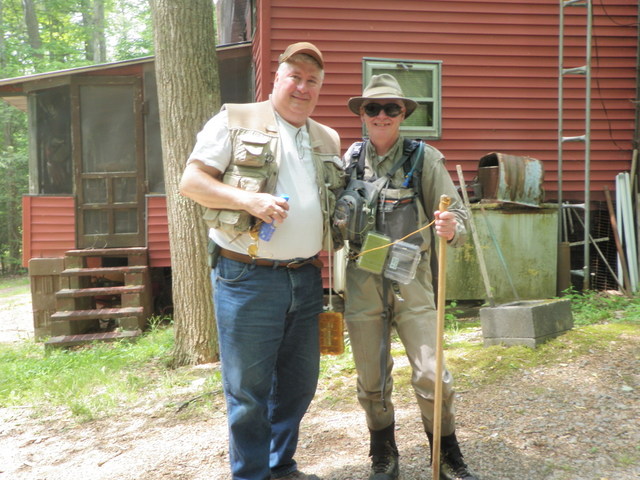
Fraternity Brothers Forty Years Later
As luck would have it, Bob was pulling into the parking lot in his Jeep Wrangler just as we arrived, and I introduced Jeff to Bob, and we finished our lunches then followed Bob to the end of Aimeti Lane where we parked next to a cabin. Bob did not bring his waders or hip boots and planned to only toss spinners from shore. We followed a path through the trees and met the stream behind a neighboring cabin. I waded in a few feet at the riffle section at the top of the pool while Jeff circled around the bottom and came up the opposite side under some overhanging tree limbs. Bob meanwhile positioned himself at the midpoint of the pool and began lofting long casts across the middle current toward the opposite bank.
In short order I began to notice some rises along the middle current seam, but the fish were showing no interest in my prince nymph. I clipped off the two fly combination and tied on a green drake but again my fly went unmolested while the fish continued to rise before and after my fly floated by. Jeff yelled out that he was seeing cornuta so I found one of my olive body cornuta comparaduns and tied that to my tippet. Once again my fly was ignored as trout sporadically rose to inhale something. Jeff had seen isonychia bit upstream and they emerge sparsely so perhaps that was the answer? I exchanged the cornuta imitation for a dark maroon body isonychia and executed a cast directly across and allowed the fly to drift downstream along the current seam. On the third such drift a trout rose and attacked the iso and I set the hook and battled a hot rainbow. Eventually I landed the hard fighter and took it to the bank to photograph; however, when I tried to remove the fly, I noticed it was quite deep and blood trickled from the rainbow’s gills.
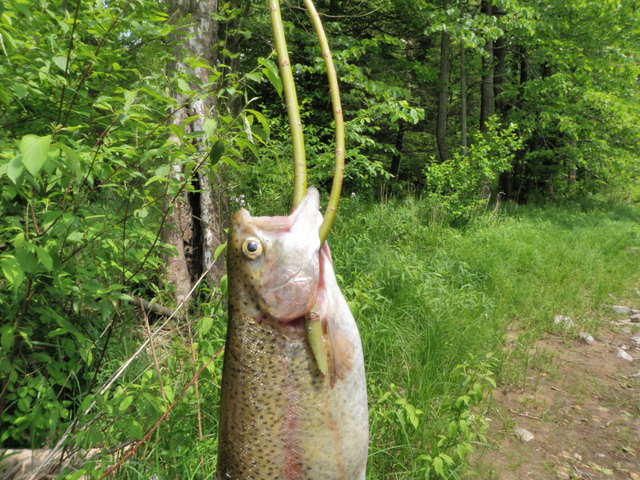
Nice Willow Stringer
Rainbows are stocked fish and we were outside the no kill, so I decided to kill this fish as it was apparent that it would not survive if released. Bob joined me and cut a willow branch with his pocket knife and constructed a makeshift stringer. We fished a bit longer until it was approaching 3PM and then decided to adjourn to the no kill area before crowds of fishermen descended after getting out of work. I asked if Bob would take my fish back to Lewisburg and clean and bring along to the cookout at Ken Hafer’s place on Friday night. He graciously agreed and Jeff and I headed back to the no kill area.
Along the way we stopped near Little Mountain so I could pick up my rental car and park in the fish commission parking lot. When we arrived the parking lot was full so we parallel parked next to the trees on the shoulder of the small dirt road leading to the parking lot. As we prepared to fish some kayakers returned from their journey and opened up some parking space, but we kept our vehicles where they were. We munched down our dinners which closely resembled our lunch and then descended to the no kill water. For the next several hours until 8PM we moved around in the area downstream of the parking lot. We encountered two fishermen but were able to find plenty of juicy water and in fact we wondered where all the occupants of the cars in the parking lot were.
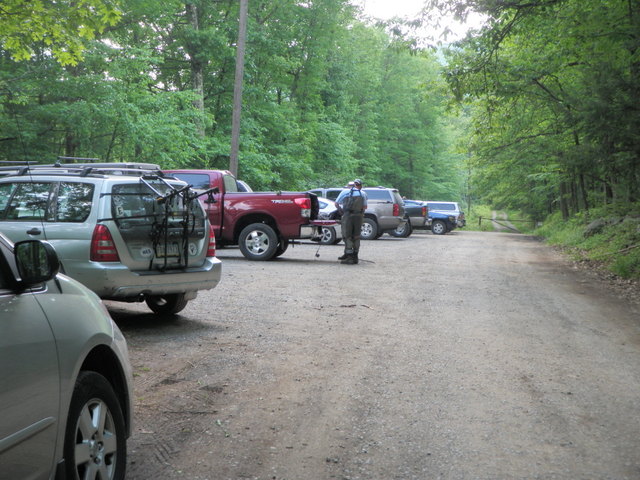
No Kill Parking Lot Fills Up on Thursday for Evening Green Drakes
Jeff picked up several nice fish in excess of 15 inches including a 21 inch beauty from one of his favorite spots, but I was largely blanked and stuck on 12 fish, nearly all stockers. It was a nice fish count for a day on Penns Creek but I had yet to land one of the wild deeply colored well fed browns that I deeply craved.
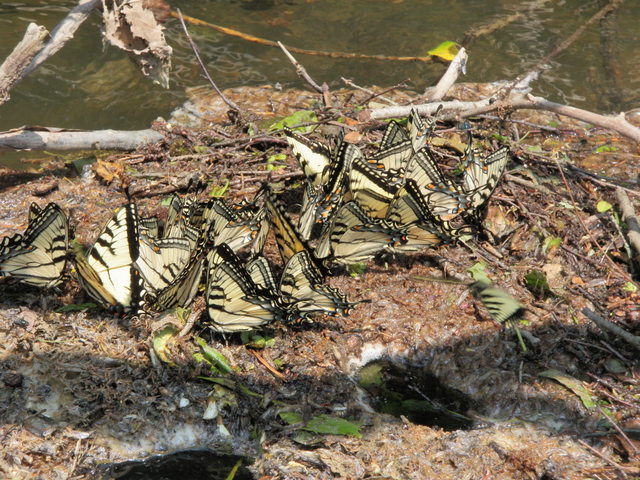
A Final Close In Shot
As darkness approached we moved to the top of a large pool and no other fishermen were present. The green drake spinners were now flying at rapid speeds up the stream at a distance of five to six feet above the water, and the grand performance began. A fish rose here and there and then as all daylight disappeared an amazing scenario played out. The stream was filled with loud smacking sounds as trout rose and feasted on the green drake spinners. Initially I could barely see my green drake spinner fly with a light yellow foam body, but this only lasted for ten minutes or so and I was surrounded by complete darkness. This didn’t stop the trout and the rapid fire sound of trout slurping and sucking down green drakes along with some air built to a loud natural drum beat. I noticed a fairly regular riser three feet from my left foot just before daylight disappeared, and I could hear this fish continuing its ravenous feeding ritual so I focused my casts in this vicinity. I simply flicked my fly a few feet out from my right leg and then listened for a slurp and set. Forty nine times I repeated this ritual which resulted in air, but as I began to despair of catching any fish, I set the hook at the sound of a smack and was amazed to feel weight on my line.
Landing a large fish in darkness is a creepy experience. The fish went into a head shaking routine and made numerous short runs up and downstream, while trying to roll the line and free itself. I held tight and allowed the fish to take line several times until I eventually guided it just upstream of my position and finally got a decent look at a 16+ inch hefty brown that thrashed and splashed in a futile attempt to get free. Finally I slid my net under the beautiful wild brown, and it was gratifying to know that I’d succeeded in catching a wild Penns Creek brown on a green drake spinner. I flicked my light on briefly and the stream was blanketed with the large green drake spinners. Jeff and I estimated that there were six spinners for every square foot of surface area. The other amazing thing was the recurring thud that I felt as these behemoth flies flew upstream and crashed into my rod. The entire scene was a unique and entertaining natural experience.
I released my prize catch and heard another fish rising a few feet above me and also quite close so this became my next target. The same repetitive process played out with unproductive cast after unproductive cast executed. It was as if I was thrashing the water with no apparent goal in mind. But eventually on one of my lifts to recast I again felt weight and again a fish began to battle up and down the stream in the total blackness. What was on the end of my line? I patiently held my ground and applied side pressure and once again I was fortunate to slide my net under a fat wild brown after five minutes of fighting. This fish also appeared to be 16+ inches with a large girth apparently acquired through nightly trips to the green drake smorgasbord.
Meanwhile Jeff persisted and finally managed to land a fine Penns Creek brown to go along with his other catches on the evening. He estimated that he landed four browns that summed to 75 inches over the course of the evening. It was a milestone night for even this veteran of Penns Creek fishing.
By 10PM the rising activity waned and we decided to carefully find our way back to the car by the light of our flashlights and headlamp. Tiny gnats were immediately attracted to our lights and covered our faces making it difficult to see where we were going, but once we climbed on to land, the tiny bugs went away and we approached the parking lot. We removed our waders but left our rods set up for Friday and then drove the 45 minutes to the Bucknell campus. I had arranged to pick up the dorm key at the public safety building, so we found that, and a security guard behind the glass window gave me two keys and directed me to Roberts Hall. This is the oldest dorm at Bucknell and we soon discovered it smelled musty, did not have air conditioning and had no hot water. To say the least we were not pleased and regreted making the long drive which cost us sleep and fishing time the next day. I discovered upon registration on Friday that the woman I spoke with forgot to transfer the reunion package to public safety thus causing the frustrating night in Roberts.
Despite the poor ending to our day, it was a great experience. All the variables came together and I experienced a morning green drake emergence and a thick spinner fall as darkness descended. It was truly an amazing evening and something I will never forget.
Like this:
Like Loading...

